Effective spelling instruction emphasizes the structure of the English language.
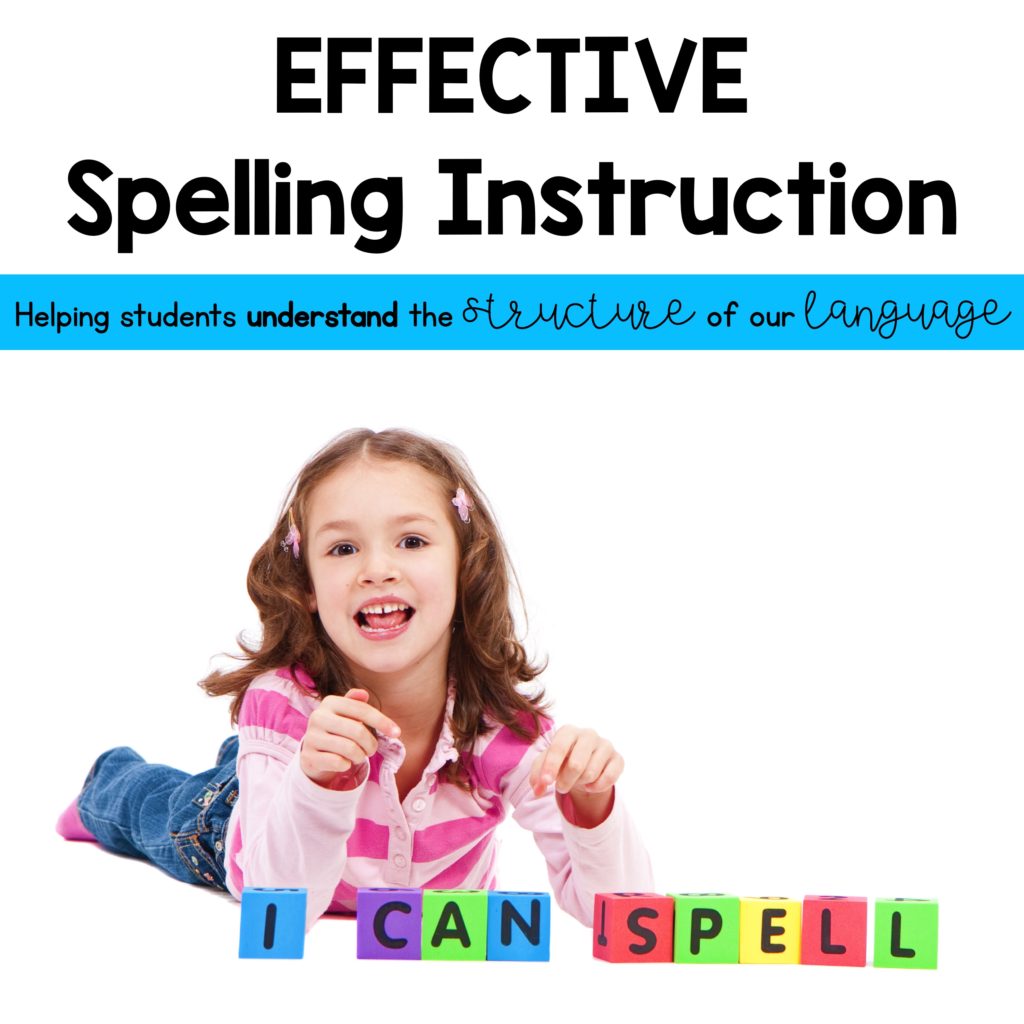
I’d like to start this post by throwing my past teacher self under the bus. That’s right, I can honestly tell you that I made a lot of mistakes for years. Was I dedicated? Heck yeah! Did I have the right intentions? For sure! Did I think I was doing the right thing? You betcha!
For many years, I treated spelling as an afterthought at best. Sure, I had spelling tests and did a little phonics instruction here and there, but I wasn’t teaching it well and I wasn’t assessing it properly either. Most importantly, I wasn’t understanding the role that spelling has on students’ success with learning to read.
I was all about Balanced Literacy and did not see the value in a more explicit approach to word study. In this post, you will (hopefully) see why I’ve changed my mind. I can’t count the amount of times (in the past) I said that English doesn’t make sense and phonics only sometimes works because of all of the “rule breakers”.
For years I taught “sight words” as words we just memorize from looking at them a lot and seeing them hung around the room or simply pointing them out in books or during shared reading. But then I started digging. I was thirsty for answers about why some students struggled so much. Why couldn’t they remember the words after seeing them so many times? Why did kids ace a spelling test then turn around and spell the same word wrong in their writer’s notebooks? I thought at the time it was our darn English language that makes no sense. Actually, it was my lack of understanding and education with the structure of our language.
Enough about me! Let’s get to it.
Does English Make Sense?
I feel like these two quotes say it all so well, so I’m going to let them do the heavy lifting. I will explain these two claims throughout this post.
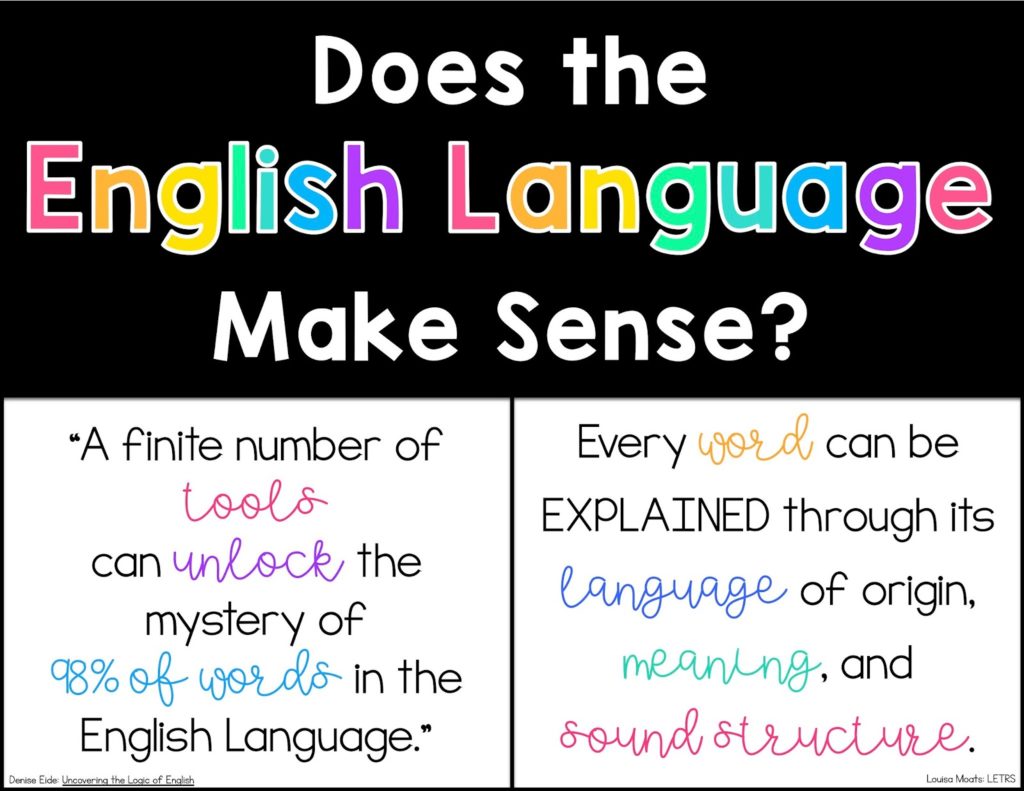
Part 1: What is English Orthography?
Those tools that can unlock the mystery of our language should not be kept secret and locked up in a box, but doesn’t it sort of feel like they are? I started to unlock that secret box when I dug deeper into phonics, but then I realized it’s more than just phonics. It’s actually about having a broader understanding of English orthography.
A very simplified way to look at orthography is spelling, but it is bigger than that. Orthography is how we represent speech in writing and all the rules (or generalizations) that go along with the spelling of words.
Phonics and spelling together help develop readers. Our students move from sounding out words to instant recognition of words from memory. (To read about how this happens, click here for my post about orthographic mapping.)
According to Louisa Moats, to understand a word’s spelling, we need to look at:
- Sound-symbol (phoneme-grapheme) relationships
- The patterns of letters (position of letters in words) and syllable patterns
- Morphology
- The history of a word (etymology)
Linguistic Units that Spelling Represents:
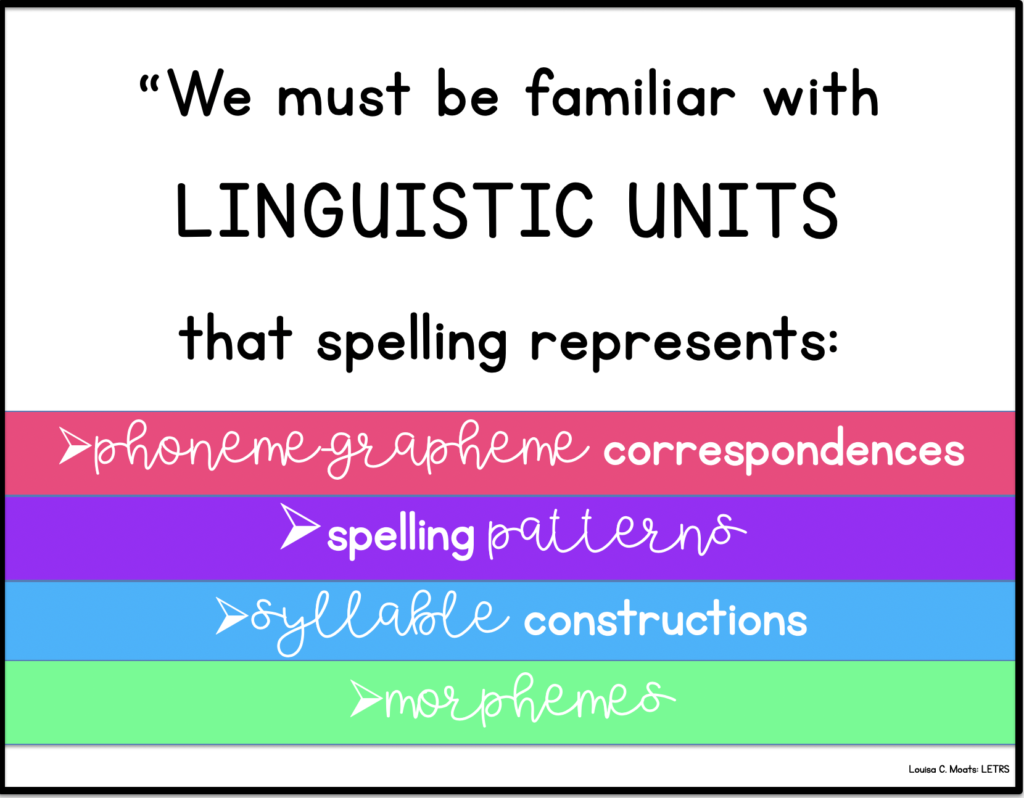
- Sound-symbol relationships begin when we teach the alphabetic system. In kindergarten, we begin with single graphemes (26 letters of the alphabet) and move to multi-letter graphemes (like sh, ai, igh, etc.) in first and second grades.
- Students learn that familiar phonemes (sounds) are linked to these graphemes (symbols).
- Once students learn these sound-symbol (phoneme-grapheme) relationships, we move into phonics instruction with rules and patterns (letter patterns and syllable patterns).
- An example of a letter pattern is where the grapheme ck is used in a word. (The grapheme ck is only used at the end of words, following a short vowel.) In other words, the spelling of a sound can change according to its position in the word.
- Learning these phoneme /grapheme relationships and patterns is the first step in understanding English orthography (and actually the first step with spelling instruction(.
- More about syllable patterns below.
But it doesn’t stop there! In addition to understanding phonology, we must also understand morphology.
- Morphology is the study of how words are formed.
- With morphology, we are looking at the structure of words (think roots, bases, suffixes, and prefixes).
- English is morpho-phonemic, which means the meaning of words (morphology) is balanced with the phonology of a word. English spelling represent sounds, syllables, and morphemes.
- As students get older, looking at meaningful word parts (morphemes) actually takes precedence over letter-sound correspondence.
- For example, when we see the word “jumped”, we understand it as base word jump plus suffix -ed to make it past tense. We do not see it as “jump-ed” with an emphasis on the short e.
- Morphemes are often spelled consistently, but pronounced differently. This causes a lot of confusion, but only if you unaware of the morphology of a word.
- An example we see early on is child and children. The base, child, maintains its spelling but the pronunciation changes.
- The example I’ve heard often is sign and signal. That silent g really DOES make sense. It is there to mark a meaningful relationship to signal. Interesting, right?!
Because morphology plays an equally important role in spelling, many graphemes make multiple sounds. Helping our kids understand the structure of our language will help with their reading and spelling.
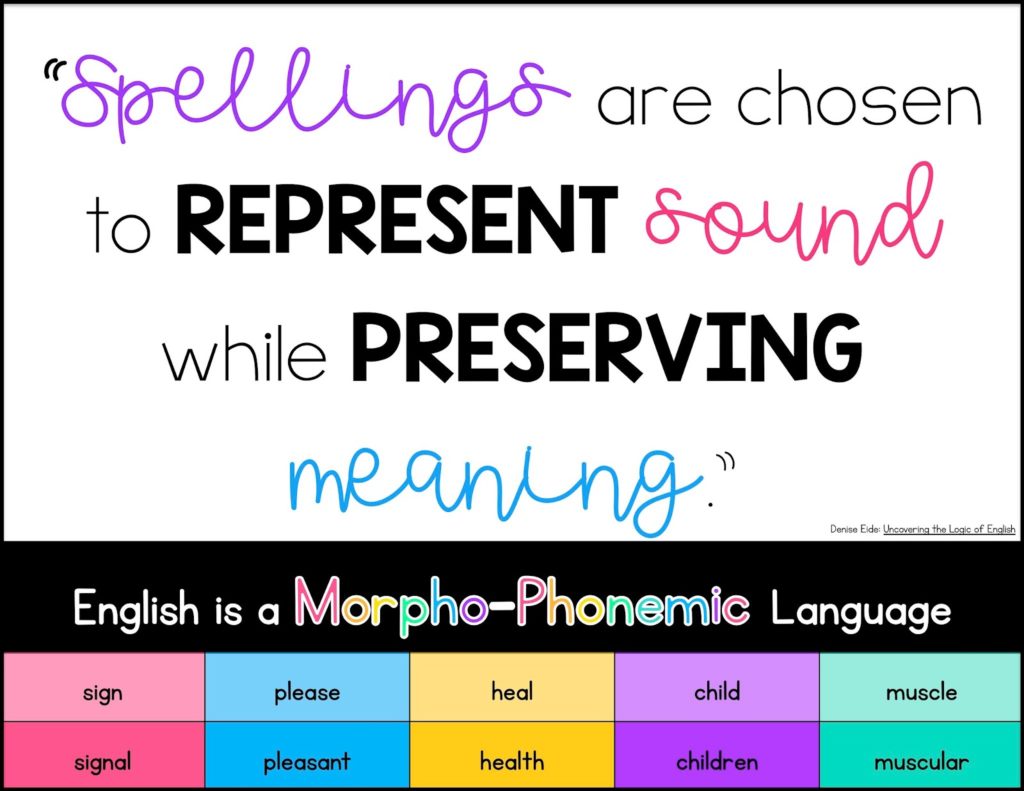
Etymology: The History of Words
Orthography also involves the history of a word, or its etymology. I think this quote from The American Way of Spelling by Richard Venezky is really interesting: “Words, unlike people, have been forever welcomed, regardless of their origins.” The spellings of words from other languages have been retained while “coexisting with native ones”.
We can learn a lot about morphology through etymology. English is influenced by many other languages, including Latin, French, German, Greek, and Celtic. I have only dug into etymology a little, but I definitely find it fascinating. It puts you down a rabbit hole, that’s for sure! If you’re interested in the history of a word, type it into etymonline.com.
Conventions of Print
Finally, English orthography also includes rules like capital letters signifying a proper noun or beginning of a sentence. It includes symbols like apostrophes that show possession or contraction.
It’s no surprise then, that English is considered one of the most complex languages. Yet, in school we don’t spend a lot of time learning the ins and outs of our language anymore. I didn’t even learn these rules when trying to become a teacher. In fact, I’m still learning them.

Turns out, English is not as crazy as it seems, once we understand it. Here are some stats I’ve gathered from different books or articles. Note that they may be off by a few percentages, but overall it’s pretty darn close!
- According to A Fresh Look at Phonics by Wiley Blevins, 84-87% of words follow sound-symbol spelling patterns (this is from research done by Hanna et.al 1966). This includes many of the “sight words” that we may consider “irregular”.
- According to Denise Eide (Uncovering the Logic of English), 98% of words can be decoded just by knowing all of the grapheme-phoneme relationship and the rules of our language.
- To be more specific, researchers have said that about 50% of words are predictable based on sound-symbol correspondences, while another 34% of words are just off by one sound. However, once word origin and word meaning are considered, only 4% of English words are truly irregular. (Joshi, Treiman, Carreker, and Moats: How Words Cast Their Spell)
I’m less concerned with the example percentage and more focused on the overall message here that we do have the tools to unlock that mysterious code.
The more I learn about the English language, the more I realize there really are fewer “exceptions” than I previously imagined. Kids are interested in understanding words, too! They are naturally inquisitive and want to know why some words are spelled the way they are. (Is it going too far to say spelling instruction can be fun?)
Part 2: Linguistic Units in Detail
Before we can dive into spelling instruction, it is helpful to get a little background. I’m going to go through each linguistic unit a little more in depth.
Phonology: Phoneme-Grapheme Correspondences
Phonology is the study of sound patterns in human language. Spoken words are made up of phonemes (sounds). When we write, we are translating those speech sounds into recognizable symbols (graphemes– also called phonograms). Phonology looks at how we connect our sound system to written words.
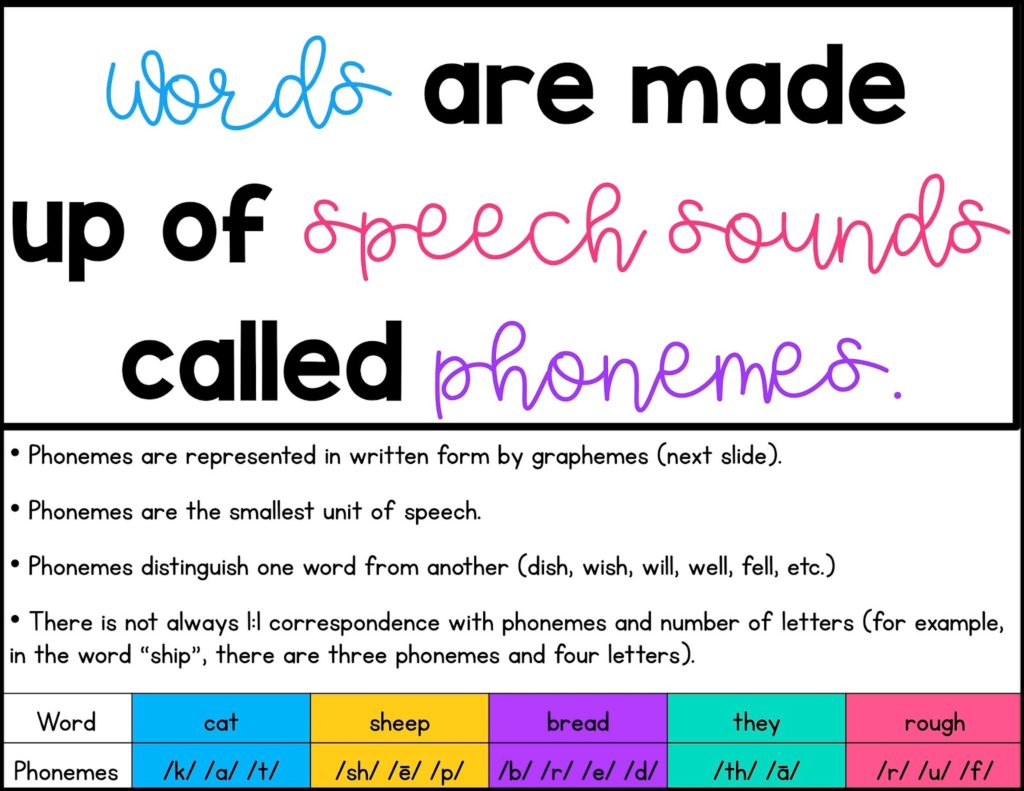
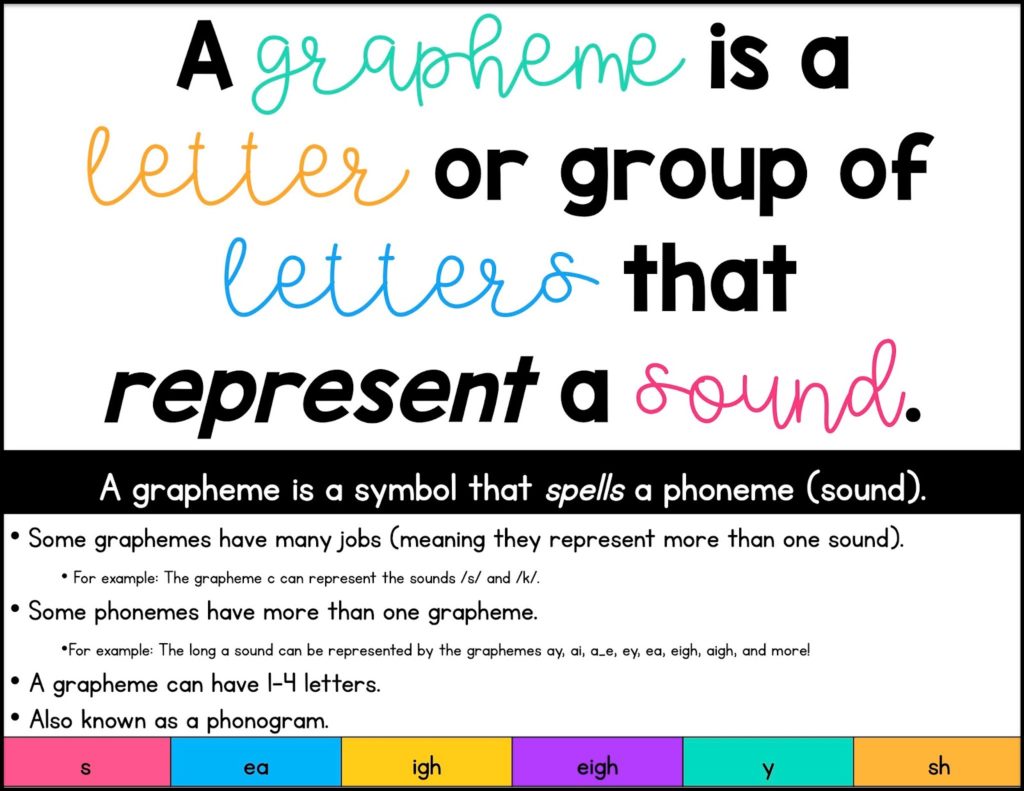
- 26 graphemes are single graphemes (letters of the alphabet)
- 49 are multi-letter (sh, igh, ea)
- NOTE: This says 75 basic graphemes. There are also more advanced graphemes as well, but those only appear in a small handful of words (in some cases just a couple). Those are usually taught later (3rd-5th grade).
- Click HERE for an article from the Journal of Literacy Research that summarizes a phoneme-grapheme frequency count done by Hanna et al.
(1966). Paul Hanna developed tables that described the relative frequency of the letters (graphemes) used to represent the major English sounds (phonemes).
- Long side note: When it comes to phoneme-grapheme association, something that comes up a lot is which to focus on first. Traditional phonics focuses on teaching the symbol (grapheme) first and matching it to the most common sound. Another approach that seems to match up better with the science is to teach the phoneme (sound) first and then connect it to graphemes. I am shifting to this. Here is how:
- In kinder, I do teach the alphabet, but I focus A LOT on the sound end of things.
- When teaching a new letter, I now introduce it sound first. For example, I might say, “Today we are going to learn how to read and write this sound: /b/. This sound we hear in so many words like ball, bear, and bat. One way to read and write this sound is with the letter b. When we see this (point to Bb), we will practice saying /b/.”
- Then I go into all of the activities to help learn that sound. I do a lot of orthographic mapping activities, which focus on sound first. Like I always say, I’m still learning so I’m constantly evolving and tweaking how I do things. This is one way that I’m using the research I’ve found.
- What I’m struggling with is making sure I keep it systematic and appropriate for my students. For example, when teaching the long a sound, I know there are many graphemes that make this sound but I don’t want to overwhelm my students with all the combinations. I tend to focus on one at a time so they have time to master one before adding on another to their memories. Then when it’s time to teach another, I connect back to that first one.
- For example, when I teach ai and ay together, I connect back to the long a using the silent e (a_e), showing them all together to remind students that they all make the same sound.
- I will keep you posted on my progress. So far, this system seems to be working well! To read about how our brain maps letter sequences for permanent storage, click here.
Spelling Patterns and Rules:
Like I mentioned above, our alphabetic system doesn’t have a straight up 1:1 correspondence between symbols and sounds. Our language is morpho-phonemic, not alphabetic (but we do need to learn the alphabet to apply all of this of course). See the image below to see what I mean:
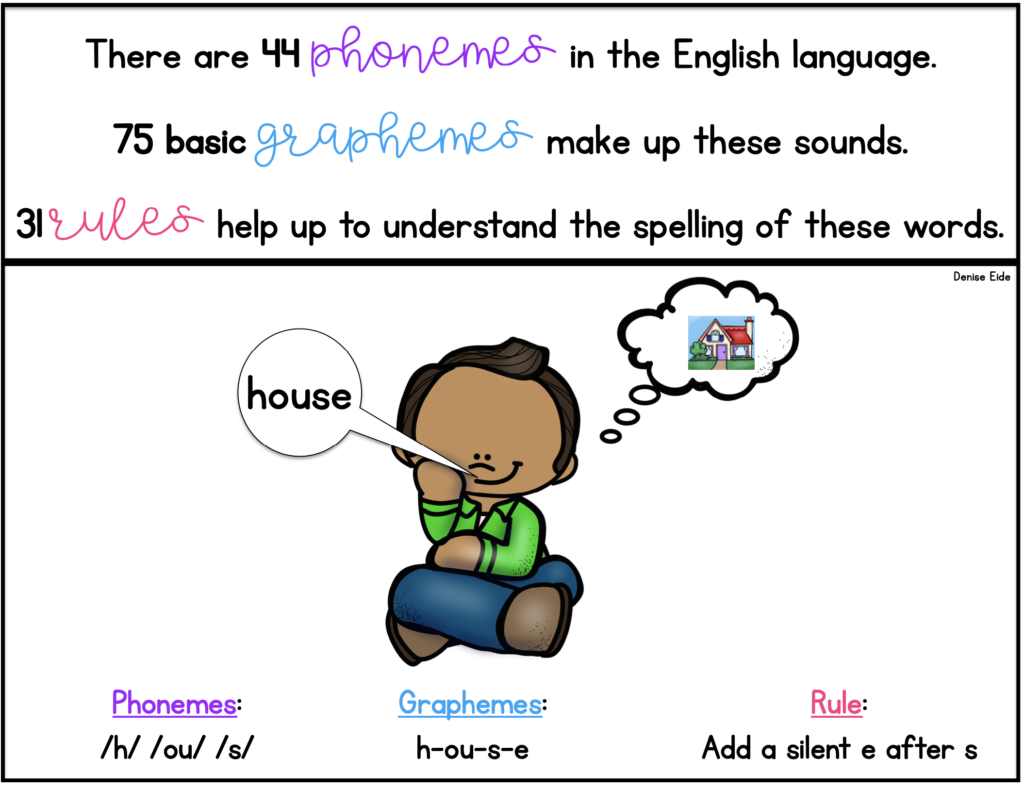
I used the word house because it illustrates two things. See how the sounds and symbols don’t match up with 1:1 correspondence? There are 5 letters but only three sounds.
- First, students must know the sound that the grapheme ou makes.
- Second, they need to know that according to the position of that phoneme, we likely will use the letter <ou> instead of <ow>. Position of phoneme can be a huge predictor of spelling. When you hear the phoneme /ou/, use the letters <ou> if that sound is heard in the beginning or middle, but never at the end. Use the letters <ow> when you hear that sound at the end OR if it is is in the middle before an <n> or <l>.
- Third, students need to know one of the rules of our language, which is one of the many jobs of the famous silent e. This silent e is a marker put there to show that this word is not plural (because we use the letter <s> to signify plural). Learning all of the graphemes/phonograms and the rules that go along with them can solve much of this confusion.
To figure out which grapheme to use, we look at the position of the sound in the word (like with ou) and we also think about the rules of letter sequences (like with the e after the letter s). Understanding this information helps our students to be more successful with spelling (and it helped me with my spelling instruction!)
Side note: I learned most of the rules I know now slowly over time haphazardly. In some cases, I learned them through webinars or presentations, and in other cases through articles, random research, and google searches! Then I did some orton-gillingham training and learned more rules in a more systematic way. Over the years, I slowly collected more and more resources that have these rules explained more thoroughly. Now I have a lovely collection and I feel like I actually do know many of the rules. At the end of this post, I will post recommendations for books that you should definitely invest in so you have the full explanation.
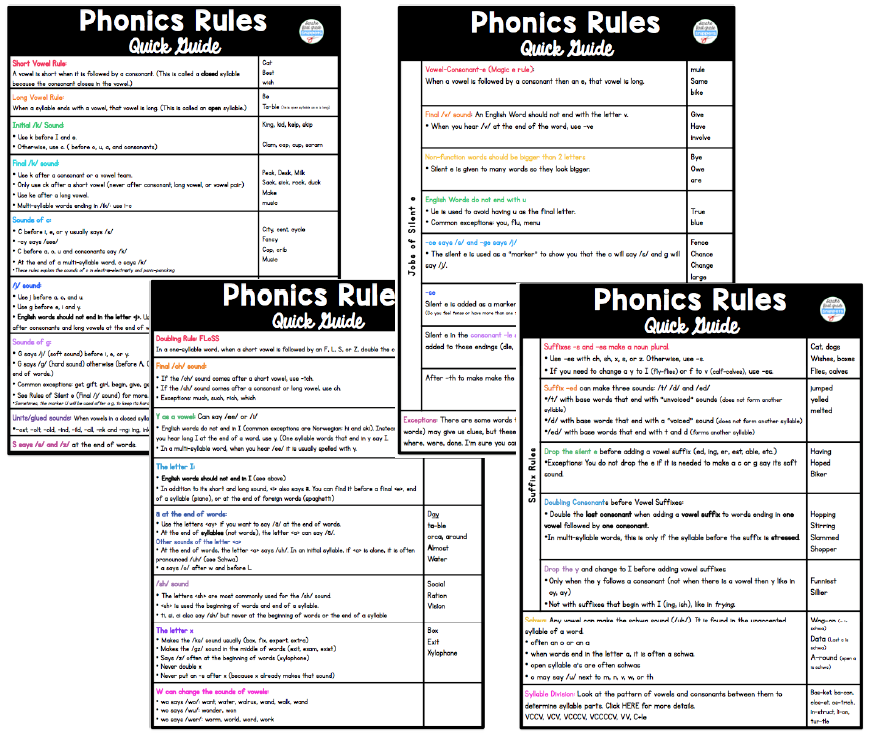
Join my mailing list to get this free quick reference guide to spelling rules. Click HERE.
(If for some reason this doesn’t work, please email me. I’m not the most tech-savvy and it shows sometimes!)
Syllable Patterns:
I have two blog posts that go into syllable types and syllable division.
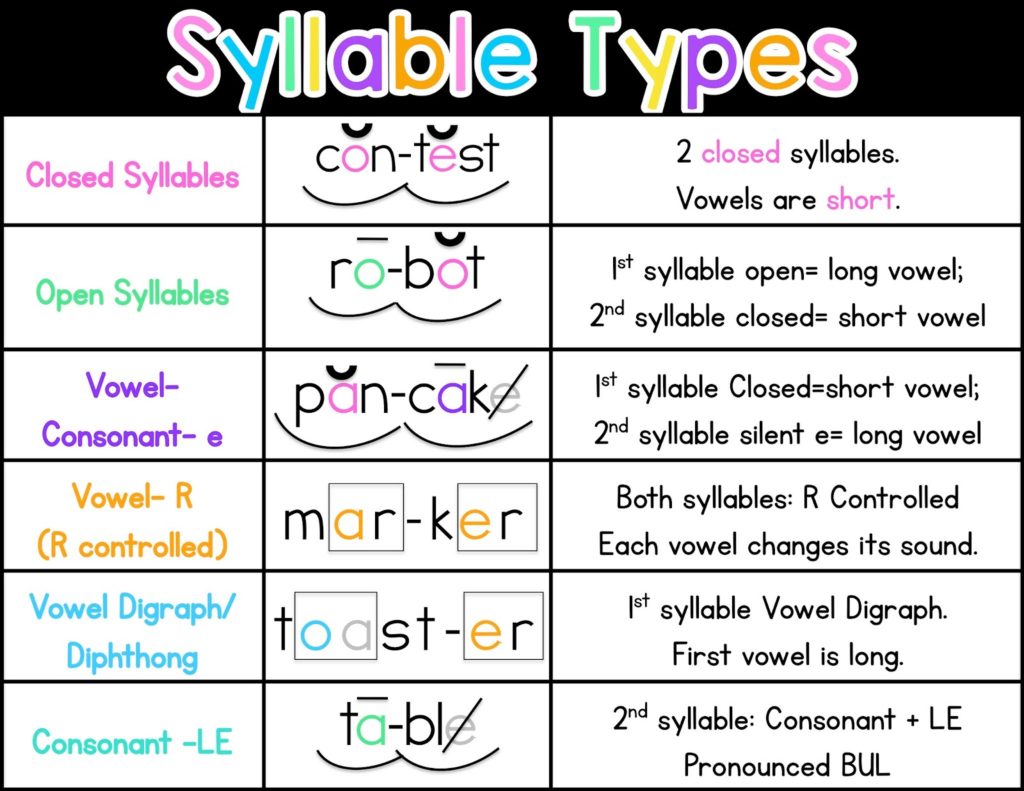
Click here to read about syllable types.
Click here to read about Syllable Division Rules
Morphology
In addition to sound-symbol correspondence, spelling patterns, and syllable structure, we must also slowly introduce morphological concepts to build their knowledge of the structure of our language. (Remember my example of jumpe above?)
First, I’ll over a few terms:
- A morpheme is the smallest meaningful unit in a word. Don’t confuse this with a phoneme, which is the smallest unit of sound in a word.
- A morpheme may be one or more syllables.
- Words may be one of more morphemes.
- Morphemes can be free morphemes, meaning they can stand alone as a word, or they can be bound morphemes, meaning they can only be with other parts of a word.
- For example, the word instruction has three morphemes: in (prefix), struct (base), and ion (suffix). All of these are bound morphemes.
- In the word uncovered, there are three morphemes: un (prefix), cover (base), and ed (suffix). Cover is a free morpheme because it can be a stand-alone morpheme, but it can also have added affixes.
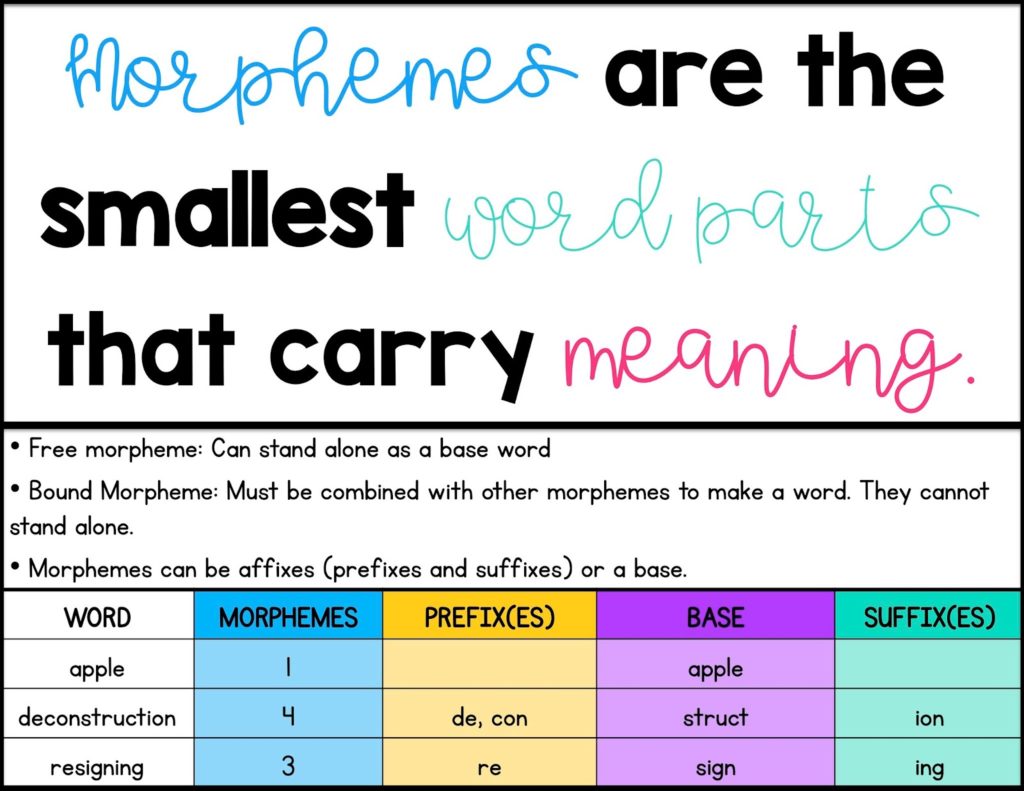
I incorporate morphology into my spelling instruction as early as kindergarten when I introduce the suffix -s. As I mentioned above, we spell by phoneme-grapheme relationships, but we also spell by meaning.
In the early years, students will see this with words that have suffixes and prefixes. When they are reading, they may cover the familiar suffix -ed and then use sound-symbol knowledge to decode the base word first. They can then use their knowledge of morphology to read and understand the whole word with the -ed. This is perhaps even more helpful with spelling! As students get older and words get bigger, being able to identify affixes and familiar bases is incredibly helpful.
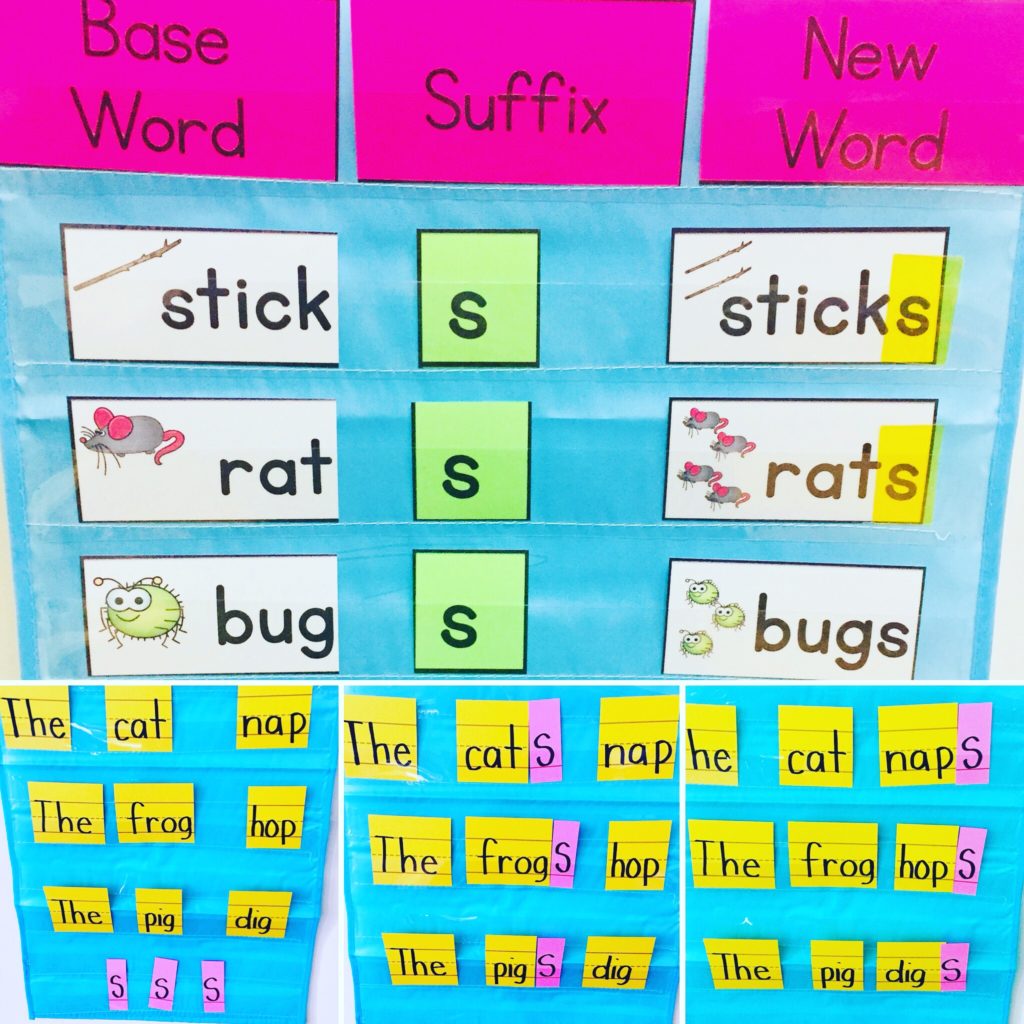
The picture above shows a lesson that I do with kindergarten or first grade students.
There are 9 prefixes that make up 75% of words. (White, Sowell, and Yangihara, 1989) You can cover a lot of ground with 9 prefixes! Ten suffixes make up 85% of words. It is also helpful to know common Latin and Greek roots for older kids. I can’t say a lot of about that {yet} because I have not studied it enough and have not had enough experience teaching it. Notice the word yet! That is my next venture as my son is at the perfect age for this!
We can learn a lot by studying morphemes, beyond just helpful decoding and encoding. Morphemes carry meaning, so understanding the meaning of each morpheme helps us understand the meaning of words. In most words, the meaningful parts (morphemes) are often spelled consistently, but it’s the pronunciation that changes from one word to another. That causes us to think English doesn’t make sense, because we are purely looking at from the sound-symbol perspective. Once we are trained to look at our language as both phonological and morphological equally, with an understanding of the history, words start to make a lot more sense!
I used some examples in the slide above with sign/signal, heal/health, child/children. Notice how the spelling stays the same, but the pronunciation changes (the g is silent in one, the ea pattern changes in another, and the i sound changes in the last example). A lot of silent letters are explained by this (and many other silent letters are explained through the history). We could go all day talking about morphology, but I’m saving that for another post!
One more fun example that combines both phonology and morphology is the related pair electric and electricity.
- Notice the base spelling remains in tact.
- But why is <c> hard in electric, but soft in electricity? Generalizations can explain that one!
- If a <c> is followed by an <i>, <e>, or <y>, it is soft.
- So, in electricity, that second <c> becomes soft because of the vowel suffix beginning with an <i> is after it.
- You can also explore other related words like electrical, electrician, hydroelectric, looking at which suffixes and prefixes are added to the base and how it changes the word (both pronunciation and meaning).
I’ve been saying this for a while, but I need to sit down and write a morphology post. In the meantime, check out Structured Word Inquiry here. It’s pretty awesome!!
Before I finish, I’ll leave you with this visual that explains a lot of the linguistic terms using one word:
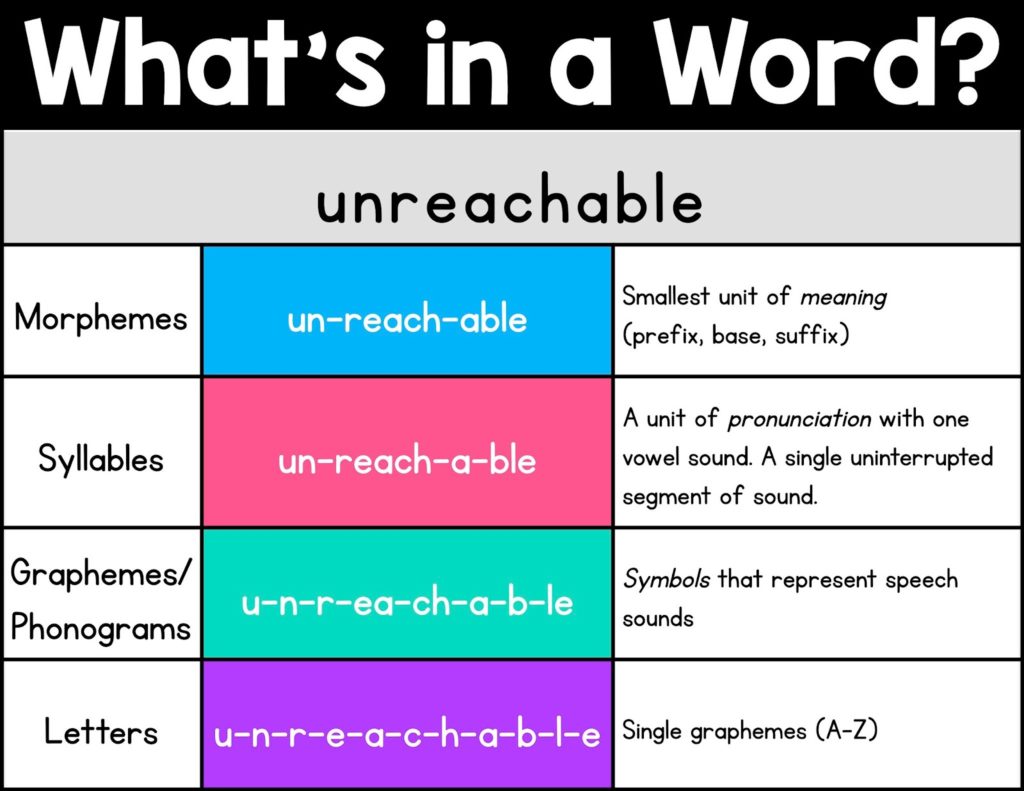
I love this example because I think it really illustrates what goes into decoding this word and also the best method for decoding.
- The quickest and easiest way is to peel off those familiar affixes (-un and -able).
- Once students have learned those affixes, they will immediately see those and be able to focus in on the base, reach.
- After using morphology to strip this word down to its base, students now use grapheme/phoneme relationships to decode the word reach.
- They can also figure out that it means “not able to reach” through knowledge of prefix and suffix meaning.
Other words may not have morphemes, so you may need to use syllable division if it is a multi-syllable word. Some words may just rely on phoneme/grapheme relationships and knowledge of the rules. Having all of these tools sure is helpful though!
I think this quote really ties it all together well:
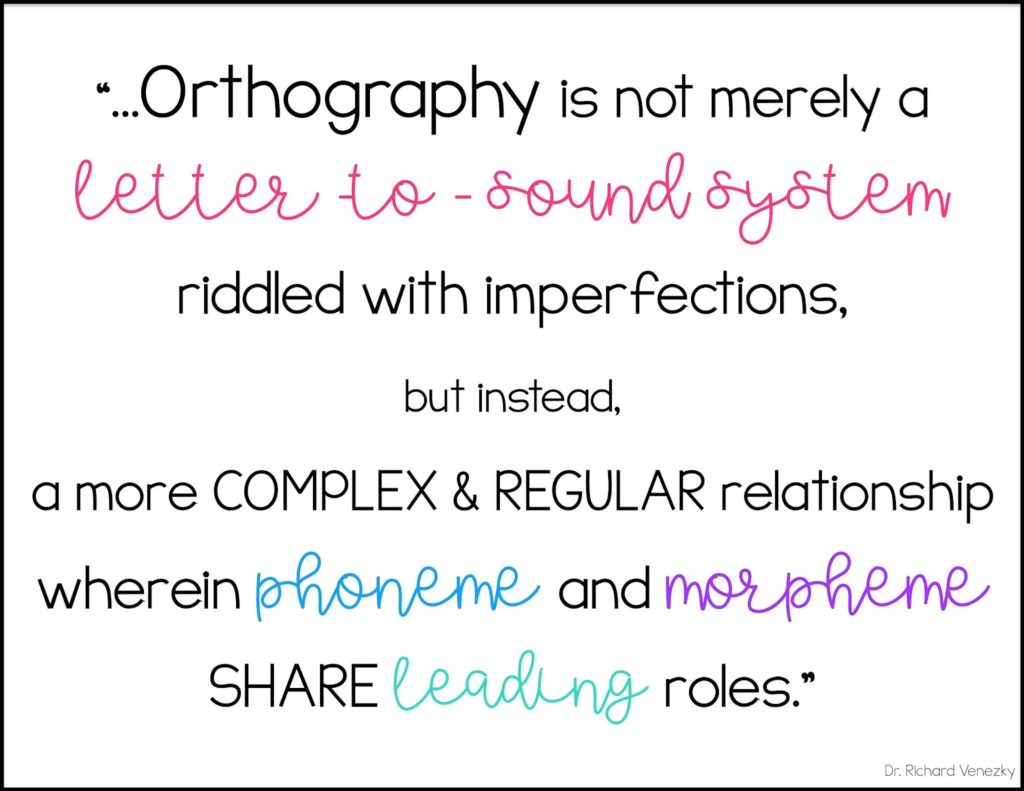
Part 3: Application to the Classroom (What is Effective Spelling Instruction?)
It feels like spelling instruction has really gotten a bad rap. I think the reason why many of us cringe at the idea of a spelling test is because we think of a list of random words that we were sent home to memorize. My husband has very font memories of spelling tests because he didn’t have to study for one second. He literally just remembered them after seeing them once. There are those spellers out there. But of course, did those spelling tests benefit them? Nope! Yet they likely get rewarded by teachers and parents alike.
On the other hand, you’ll have students that studied all week to memorize those seemingly random strings of letters, only to either fail the test OR to pass it but forget it all five minutes later. Did they benefit from the spelling tests? Nope! Did they have anxiety every week? Probably. Did they carry shame for all their failure? Likely. I think that’s why the idea of incorporating spelling into our day makes many of us twitch.
However, when I say “spelling instruction”, I’m not talking about spelling tests like that. I’m talking about teaching the structure of our language, including all of the elements I listed above. When we teach spelling like this, the finale spelling test is not the focus. The week of word study is the focus. The goal is to help our students understand why words are spelled they way they are and at the same time, improve their reading because they are mapping these words into their long-term memories. So then, what would that look like?
If you haven’t already, you’ll want to read my post about orthographic mapping. There will be a lot of overlap here.
Just like with our reading instruction, we want to keep our spelling instruction systematic and explicit. Unlike decoding, you will begin with auditory information.
- Phonics involves decoding- beginning with visual information, seeing the graphemes and translating them to sounds, then blending those sounds together. Part to whole.
- Spelling involves the opposite, encoding- beginning with auditory information, breaking apart the whole word into individual sounds, then matching those sounds to the correct graphemes. Whole to part.
- Both require knowledge of phoneme-grapheme association and understanding of letter & syllable patterns, and morphological elements.
- They are two sides of the same coin, but often one side is ignored when it should be getting equal attention.)
The following steps can be used during spelling instruction:

- Repeat, if necessary.
- Use the words in other decoding and encoding activities throughout the week.
I posted something very similar to this in my last post, but I made it printable here:
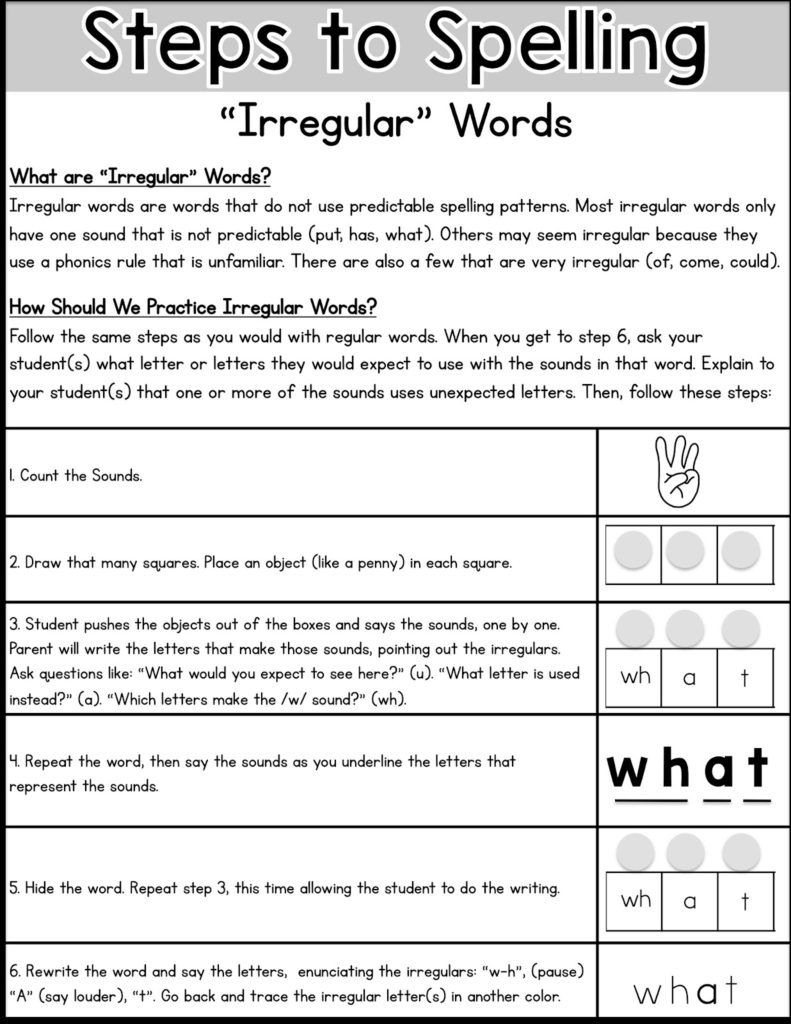
Click here to download these Spelling Steps FREE!
Choosing Words for Spelling Instruction:
Choose words that have similar phonetic elements, both regular and some irregular. For example, when you are focusing on CVC words, you may want to add in words like put. You would teach the students the parts that make these words irregular. For example, the word put is predictable, except for the middle sound /oo/ uses the letter u. Make sure you add in suffixes too. For example, I usually teach CVC words, then the suffix -s. I will have a spelling assessment with just cvc words, but then another with cvc words that do and do not have the suffix s. After I have spend time on suffix -s, that means I can throw it in any future spelling activities because I want them to keep applying it in a guided setting until it is something that is used correctly consistently in writing. (See resources below for systematic phonics lessons that can support your spelling instruction.)
Spelling Tests:
Students should not have a set list to memorize for a test. Following the same format as above gives you a great assessment of a students development with spelling. If you need an assessment, choose words (both regular and irregular) that fit with the words you are studying. You will get a true assessment of where that student is at developmentally with spelling when you see how they are segmenting the word’s sounds and then how they are connecting to the correct phonemes. If you’re teaching a specific rule (like where ck is used), you will get a good idea of how well that student can apply that concept.
The most important thing to remember with spelling assessments is to make sure you look at any errors that were made and use that to guide your future instruction. “The assessment should be an opportunity to evaluate students’ understanding of sounds and conventional spelling patterns. The kinds of words that students miss and the types of errors they make are important in evaluation their spelling achievement and their understanding of language structures.” (How Words Cast Their Spell: Joshi, Treiman, Carreker, Moats)
What about spelling homework?
What about parents who want a list to study? This is up to your personal preference and I have no data to back me up on this, but it’s my opinion based on my experience (meaning I could be wrong of course!) I think if you work in a school community where parents are asking for how to help at home, then absolutely give them that opportunity. Explain your system though. Make sure they understand that we are not going for memorization. You can use the printables above to communicate how they can work with their child at home.
When it comes to homework, I believe it needs to be meaningful, not busy work. I believe the purpose of homework is to provide extra practice with a skill or concept when needed. If it’s not needed, it becomes busy work. I also think it can be a good tool to communicate with parents what their child is learning in school. I also believe our struggling readers need as many repetitions as possible, so for them, meaningful homework can be very helpful. Again, just my opinion and I know there are so many sides to the great homework debate that all make sense to me.
Spelling Stages:
Below are slides that summarize Richard Gentry’s stages. I think this is SO helpful when thinking about spelling instruction. Originally, he called these stages. He has recently updated them in his book Brain Words: How the Science of Reading Informs Teaching (Gentry & Ouellette). I HIGHLY recommend getting this book. There is so much information in this book and it goes into these stages much more in depth, along with examples of each stage (now called phases). I actually bought this book after I wrote this post originally. I tend to wait a while before posting so I can reread and make sure I’m happy with my content. I stumbled upon this book and then had to read it before publishing this post. I’m glad I did because it not only backed up the content I had written, but it also gave me some new information to share! Three months later I may actually hit the publish button. LOL!
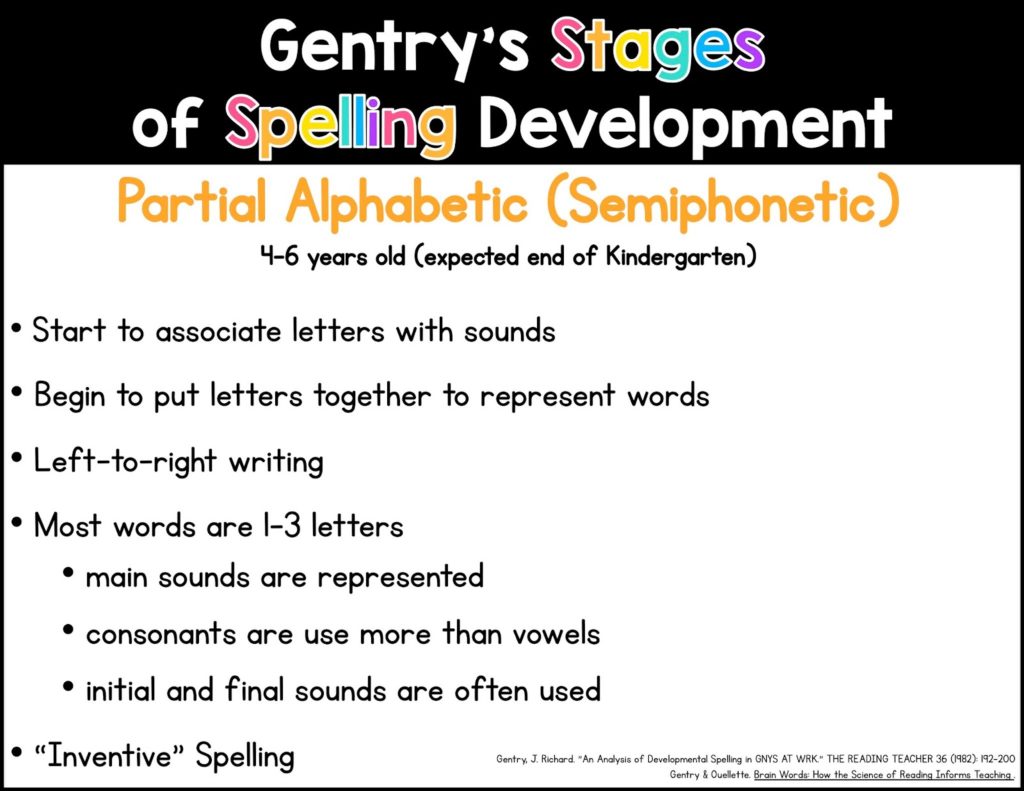
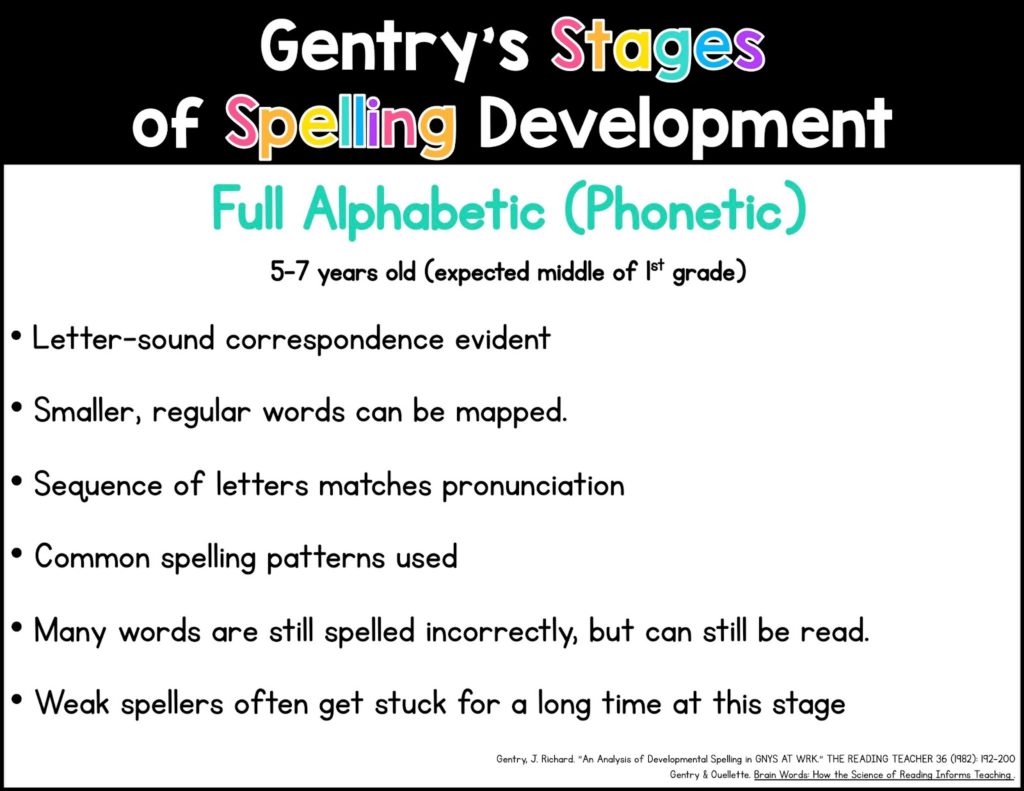
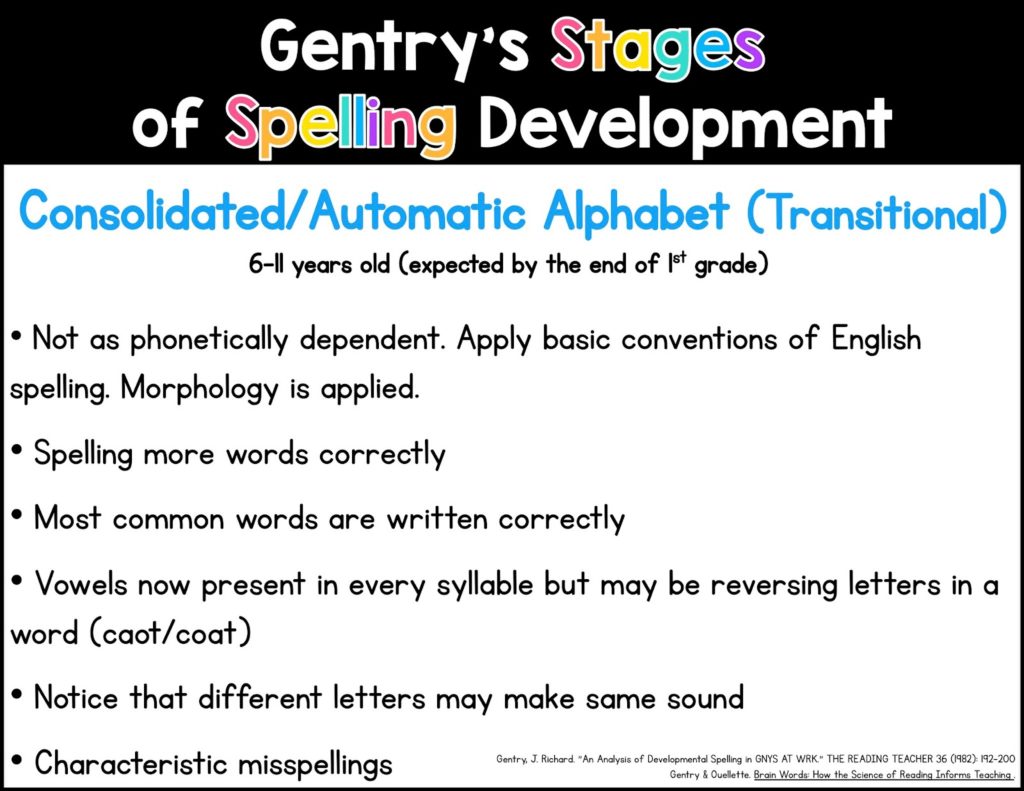
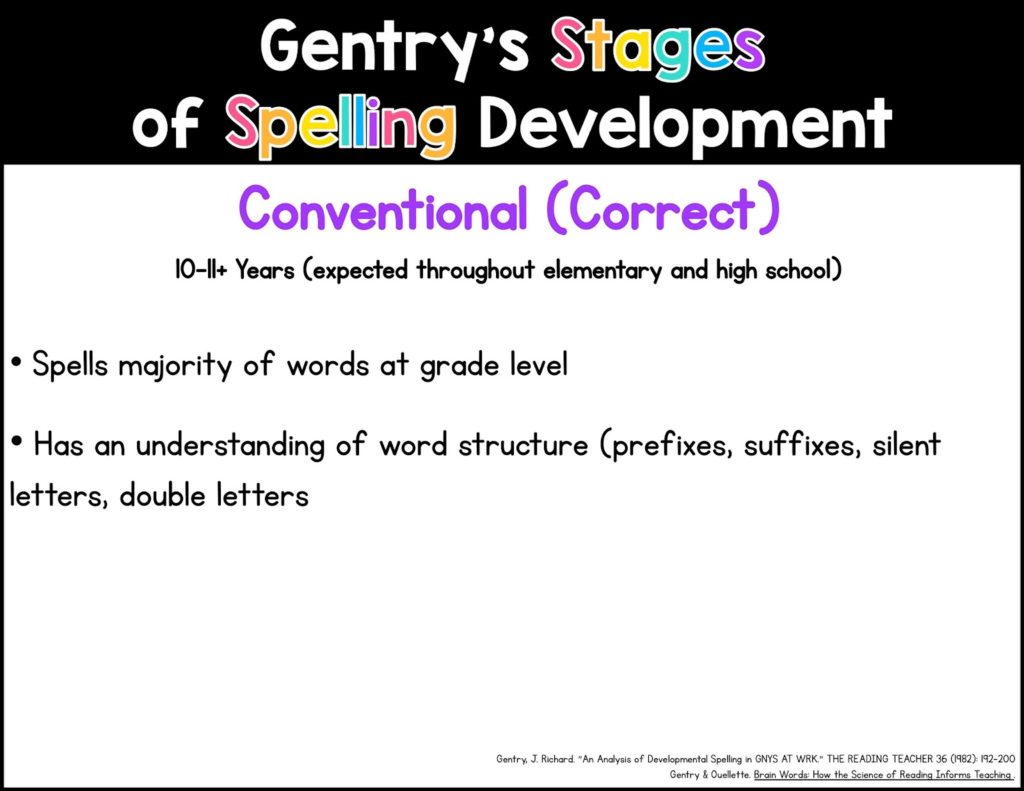
What about students with dyslexia?
Dyslexia is a language-based learning disability. It is neuro-biological in origin, genetic, and common (1 in 5). Students with dyslexia struggle with decoding (sounding out words), encoding (spelling), word recognition, and reading fluency. Students with dyslexia learn to read in a way that differs from the typical reading brain. It is important to note that students with dyslexia have average to above average intelligence and often have gifts, including creativity, “big picture thinking”, spacial awareness to name just a few. However, reading and spelling are a struggle! See my post here to learn more about what happens in the dyslexic brain when reading.
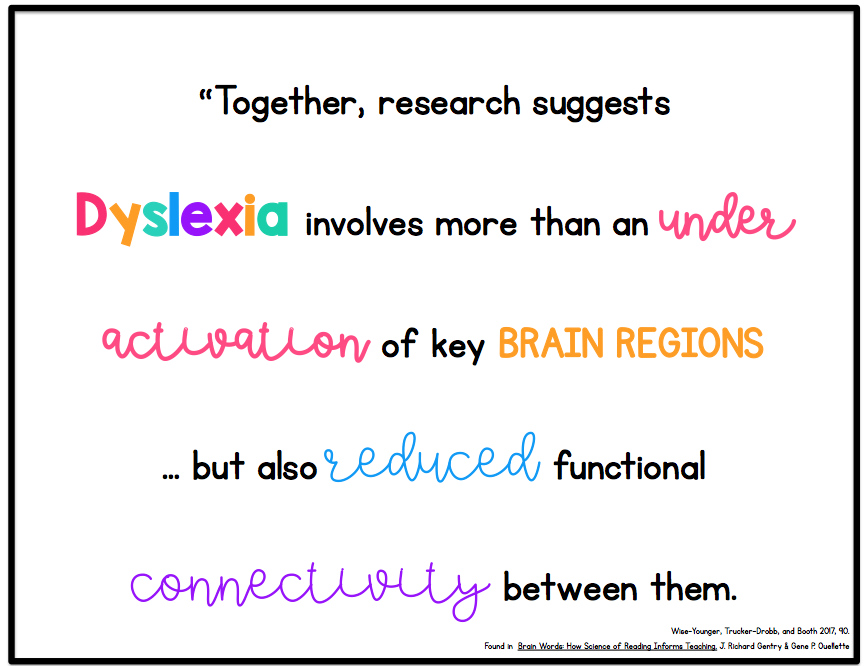
You can often see early signs of dyslexia in a student’s spelling. Actually you can potentially see it in kindergarten before you are even using letters.
Students with dyslexia have phonological processing deficits, which can be observed through phoneme blending and segmenting activities. This is more evident when you move into spelling, when students are in the stage of inventive spelling.
Students with dyslexia often have very unusual inventive spelling, due to the fact that they struggle to process the sounds. This turns into difficulties with mapping sounds onto letters and learning syllable patterns. Early detection is key! If you see a student who struggling with phoneme blending or segmenting, has unusual inventive spelling, or struggles with word recognition (even after seeing it several times), that student may have dyslexia. Intervention is incredibly effective! Studies show that we can change and strengthen the circuitry in our brains to improve reading and spelling, through the right instruction. (One article here)
Because students with dyslexia struggle with phonemic blending, segmenting, and automatic word recognition (recognizing a word “on sight”), spelling instruction is even more important for them! Traditional spelling tests with the memorize-these-words-for-a-test focus are very challenging for them and not at all beneficial. They need to understand the structure of our language more than anyone, as an additional tool in their reading tool belts.
In addition, a mixture of explicit, systematic reading and spelling instruction (decoding practice and orthographic mapping) may activate rewiring of their reading circuitry that can lead to improved reading and spelling. With that said, accommodations are also key! (Click here, here and here for ideas.) A student with dyslexia may struggle with spelling for a very long time. Usually reading improves first, then spelling.
I hope this post has been helpful! If you are interested in not missing a post, consider joining my mailing list (found at the top of the page).
Related Blog Posts
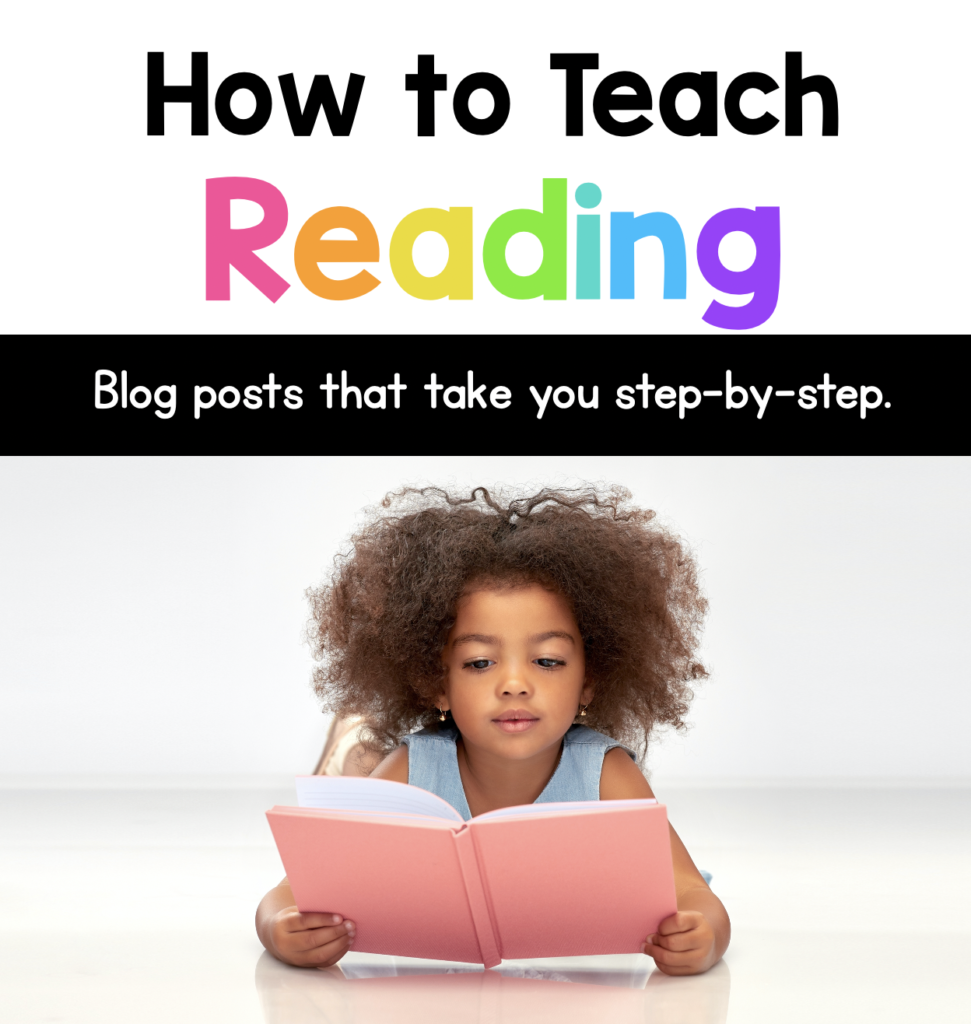
To find more blog posts about how to teach reading and spelling, click here.
Related Resources:
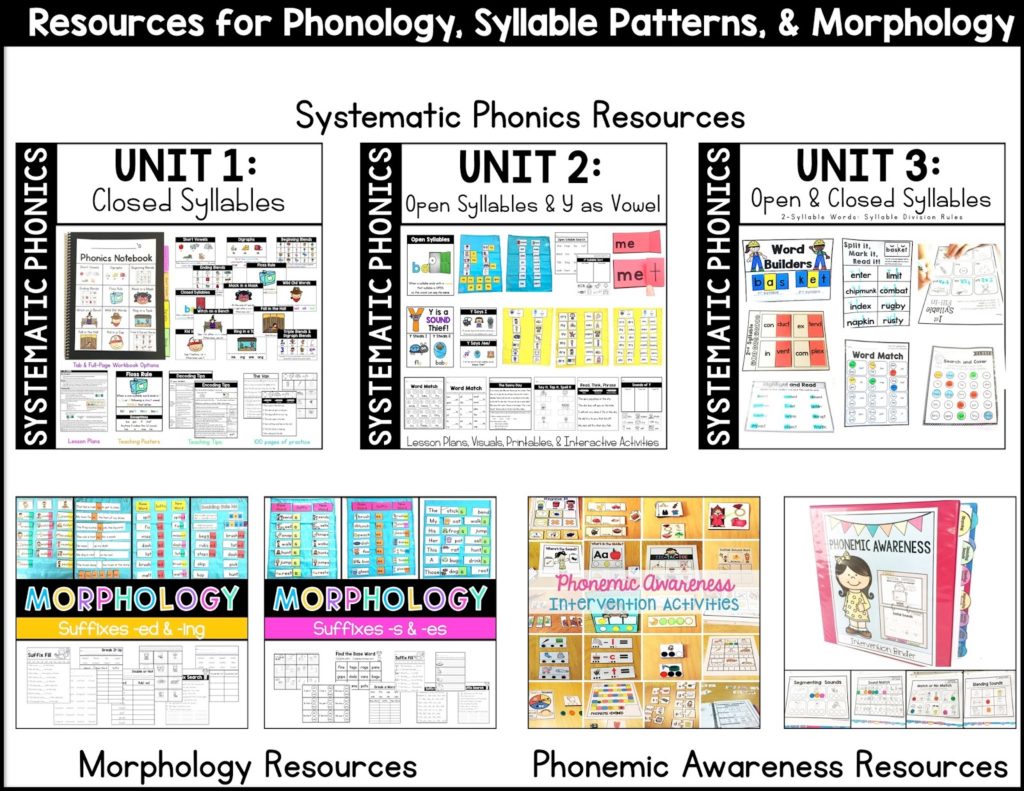
Click here for Systematic Phonics Resources.
Click here for Morphology Resources
Click here for Phonemic Resources
Click here for Phonics Resources

The Systematic Phonics lessons on the top slide provide more detail for the teacher, along with a sequence to follow. (More are coming) The resources on the bottom slide (labeled Phonics Resources) are all great supplements. I have activities at the word level, sentence level, and decodable stories. The bottom row shows printable phonics activities. These do not have lesson plans but the activities provide tons of practice for your students working on these phonics skills. The sound boxes and phonics cards are both good resources for improving spelling and decoding.
References:
I highly recommend looking into these books to learn more! If you want to learn more about the rules of English, Uncovering the Logic of English is a great resource.
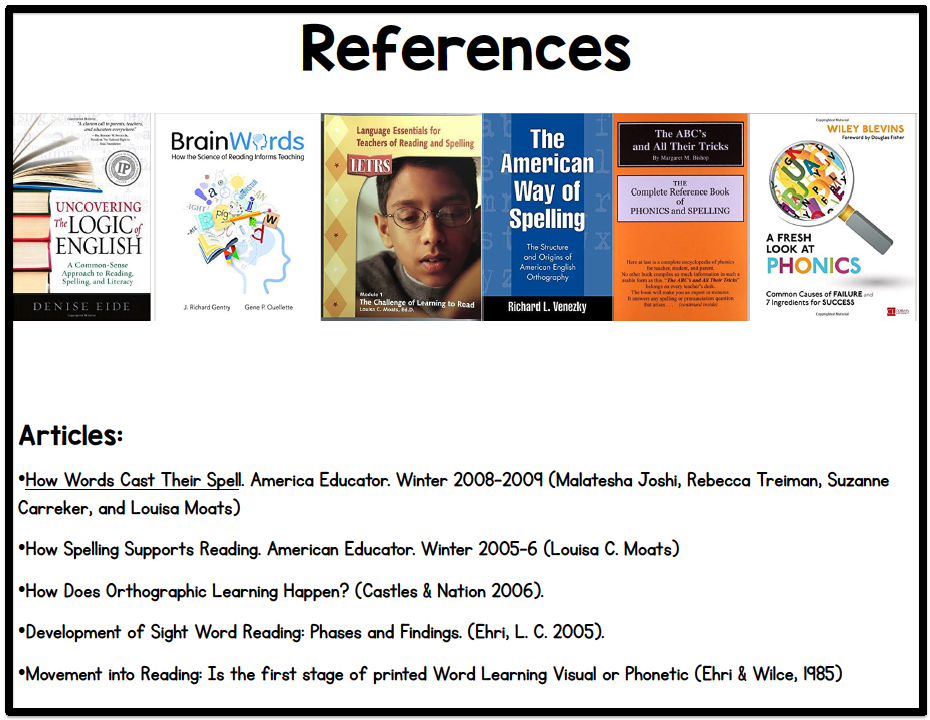
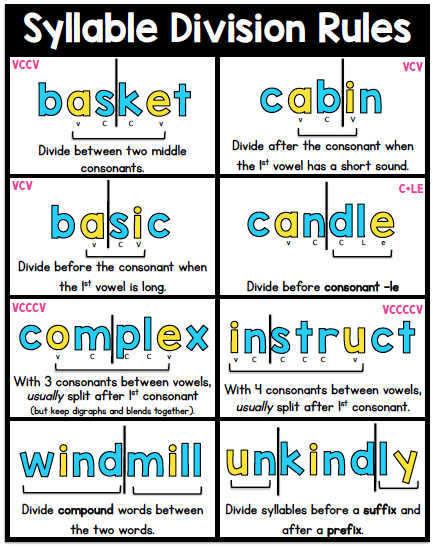
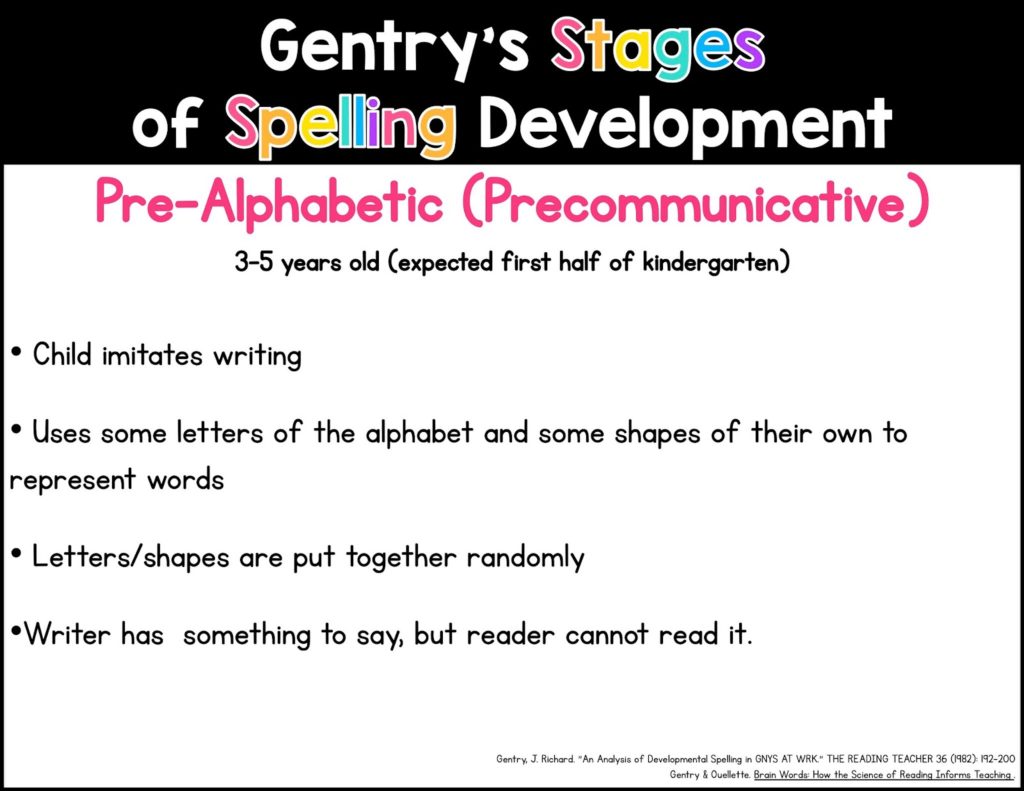







 Ever wonder why “guide” has that silent <u>
Ever wonder why “guide” has that silent <u>










 Breaking Down the Word "Education"!
Breaking Down the Word "Education"! 
 Sounds: The pronunciation of "education" isn’t as straightforward as it looks! The schwa /ə/ appears multiple times, and the "t" is pronounced like /sh/—a great example of how English words shift in spoken form.
Sounds: The pronunciation of "education" isn’t as straightforward as it looks! The schwa /ə/ appears multiple times, and the "t" is pronounced like /sh/—a great example of how English words shift in spoken form. Graphemes: Graphemes spell sounds. They can be made up of one or more letters.
Graphemes: Graphemes spell sounds. They can be made up of one or more letters. Syllables: S
Syllables: S